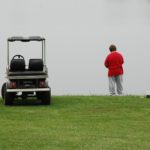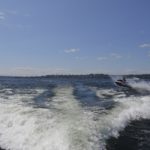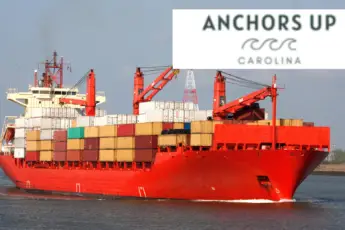Navigating inlets safely are one of the most challenging tasks a boater faces. Each year vessels run aground or, even worse, capsize, which often claims the lives of the operator and passengers. These treacherous waters are unavoidable in North Carolina, South Carolina, and Georgia when traveling by boat from inland waters to offshore waters. It is essential to first know what is a inlet and secondly why are inlets dangerous?
What Is An Inlet
Many people ask the question what’s an inlet. An inlet is a passageway between barrier islands that are most often narrow and positioned off the mainland and the Atlantic ocean in the southeastern united states.
Boaters who chose to venture offshore away from the mainland have no choice but to pass through the inlet. The weather has a significant factor in the conditions that driver will face. Unfortunately, the most dangerous inlets become even more challenging to navigate during high winds and rough seas.
What Are The Most Dangerous Inlets In Georgia, North Carolina, and South Carolina
In Georgia, South Carolina, and North Carolina, dangerous inlets are present. Here is a breakdown why are inlets dangerous in each of these three states. Take extra caution when transiting these inlets to and from offshore waters.
Georgia Inlets
The Altamaha River entrance is situated between Sapelo Island and St. Simons Island in Georgia. The combination of extreme tidal changes, shifting sands, and extreme wave heights make this the most dangerous in the state.
South Carolina Inlets
Despite the depth, width, and navigational aids, surprisingly, the Charleston Harbor entrance in South Carolina is the most dangerous in the state. The danger exists primarily because of the high volume of shipping traffic in addition to poorly placed navigational markers.
North Carolina Inlets
Likely the most dangerous of all is the Oregon Inlet situated in the Outer Banks of North Carolina. When asked why is Oregon inlet so dangerous the reason Oregon inlet dangerous is because significant amounts of water pass through on changing tides, and when combined with wind, the water can become a washing machine. However, use caution when transiting all North Carolina inlets.
How Does Weather Effect Inlets
Weather and the conditions of an inlet are directly related. The most significant impact is wind. As obvious as it sounds, high winds build larger waves.
A small craft advisory is issued when wind speeds reach a specified mile per hour range. Keep in mind that small craft advisories do not directly relate to the conditions in the inlet. While the wind will be strong and the waves will be high, the most significant impact is tides.
The waves stack up during particular wind directions and tides. As the tide goes out and the wind pushes in from offshore, waves will “stack.” Stacking waves means they grow massive in size and with sharp peaks.
Stacked waves are hazardous because of the incline, lack of maneuverability, and loss of control on the backside of the wave. As a result, vessels flip backward, the bow becomes buried as it drops down the rear of the wave, or the craft strike sandbars due to loss of control.
How To Plan The Best Time To Pass Through An Inlet
When a small craft advisory is in place, don’t go. Daily when crossing from inland waters to offshore waters, monitor the tides. The timing of the tide will help to better allow for safe passage.
When the conditions call for offshore winds blowing inshore, avoid transiting the passageway during outgoing tides. Plan the trip to exit and enter during the incoming tide or even better during slack.
Avoiding outgoing tide will help to improve the safety of boat passengers and the vessel itself. Year after year, boats capsize, resulting in both losses of life and equipment.
Study The Charts Of Your Local Inlet
Despite the open from barrier island to barrier island being large, the navigable channel is narrow. Study the charts and utilize global position systems to remain inside of the channel while entering and exiting.
Straying off course leads to boats becoming grounded on sandbars. A grounded watercraft is subject to being damaged by waves and often requires a tow.
So Now You Are Aware Of The Dangers Of An Inlet
The dangers are easily avoidable by closely monitoring weather, tides, and charts. When passing through the waterway for the first time, it is a nerve racking experience. In time you will become more comfortable and feel confident in your abilities. Lastly, remember that even the most experienced captains are unable to pass through inlets when dangerous inlets become worsened by weather. Don’t risk it, go boating and fishing another day.







Leave a Comment
You must be logged in to post a comment.